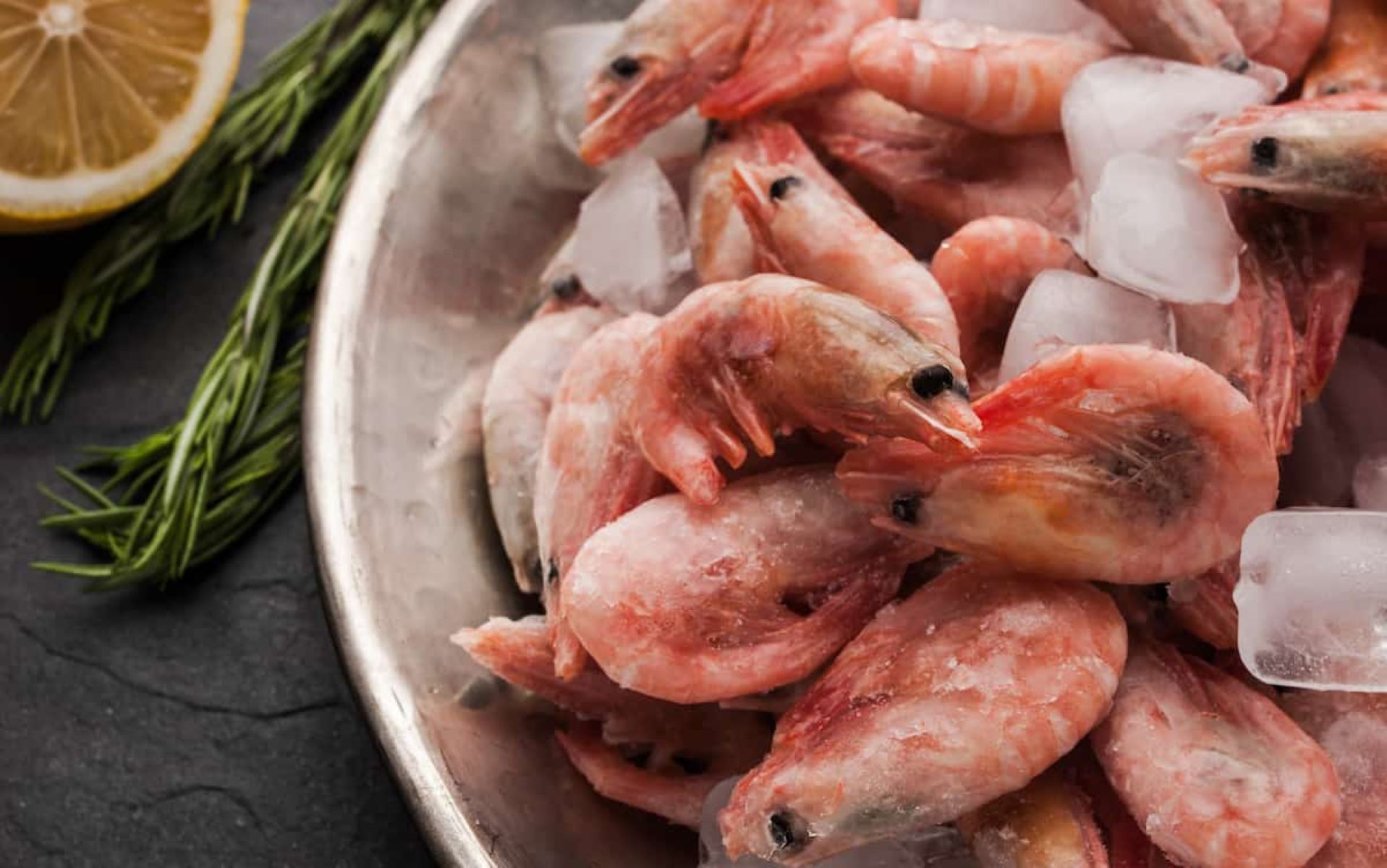

Articles
How To Store Shrimp In Freezer
Modified: August 17, 2024
Learn effective methods for storing shrimp in the freezer with these informative articles. Ensure your shrimp stays fresh and delicious for future meals.
(Many of the links in this article redirect to a specific reviewed product. Your purchase of these products through affiliate links helps to generate commission for Storables.com, at no extra cost. Learn more)
Introduction
Shrimp is a delicious and versatile seafood that can be enjoyed in a wide variety of dishes. However, it’s not always possible to use up all the shrimp you have on hand in one go. That’s where proper storage techniques come into play. Storing shrimp in the freezer is a great way to extend its shelf life while maintaining its quality and flavor.
Whether you have leftover cooked shrimp or want to buy shrimp in bulk to save money, knowing how to properly store it in the freezer is key. This article will guide you through the process of freezing shrimp, from preparation to storage and thawing. By following these steps, you can ensure that your frozen shrimp remains fresh and delicious until you’re ready to use it.
Properly freezing shrimp not only prevents it from spoiling but also helps retain its texture, flavor, and nutritional value. It’s important to note that different types of shrimp, such as raw, cooked, peeled, or unpeeled, may require slightly different storage techniques. We’ll cover all the necessary details to help you store your shrimp effectively, regardless of its form.
Before we dive into the step-by-step guide on freezing shrimp, let’s first understand why it’s so important to store shrimp properly, especially when using the freezer.
Key Takeaways:
- Properly storing shrimp in the freezer preserves its taste, texture, and freshness, ensuring it’s ready for a wide variety of dishes whenever you desire. Follow the step-by-step guide for optimal results.
- Freezing shrimp extends its shelf life, reduces food waste, and provides a convenient supply of versatile and delicious seafood. Save money, take advantage of deals, and enjoy high-quality shrimp at your fingertips.
Read more: How Long Can Shrimp Last In The Freezer
Importance of Properly Storing Shrimp
Shrimp is a highly perishable food item that can spoil quickly if not stored correctly. Proper storage not only prevents the growth of harmful bacteria but also helps maintain the quality and taste of the shrimp. By freezing shrimp, you can extend its shelf life, allowing you to enjoy it at your convenience without worrying about it going bad.
Here are a few key reasons why properly storing shrimp is important:
- Prevents spoilage: Shrimp is prone to bacterial growth, which can cause it to spoil and become unsafe to consume. Freezing shrimp at the right temperature and in appropriate packaging helps inhibit the growth of bacteria, ensuring the shrimp stays fresh for an extended period.
- Maintains texture: When shrimp is frozen and thawed properly, it retains its desirable texture. This is particularly important for dishes where the texture of the shrimp plays a crucial role, such as stir-fries, pasta dishes, or grilled shrimp.
- Prolongs shelf life: By freezing shrimp, you can significantly extend its shelf life. This allows you to stock up on shrimp when it’s on sale or when you have a surplus, ensuring you always have a supply of shrimp on hand for your favorite recipes.
- Saves money: Buying shrimp in bulk and freezing it can be a cost-effective way to save money. It allows you to take advantage of special offers or discounts without worrying about the shrimp spoiling before you have a chance to use it.
Understanding the importance of proper shrimp storage will help you appreciate the significance of following the right techniques when freezing shrimp. Next, we’ll explore the factors you need to consider before freezing your shrimp.
Key Takeaways:
- Properly storing shrimp in the freezer preserves its taste, texture, and freshness, ensuring it’s ready for a wide variety of dishes whenever you desire. Follow the step-by-step guide for optimal results.
- Freezing shrimp extends its shelf life, reduces food waste, and provides a convenient supply of versatile and delicious seafood. Save money, take advantage of deals, and enjoy high-quality shrimp at your fingertips.
Read more: How Long Can Shrimp Last In The Freezer
Importance of Properly Storing Shrimp
Shrimp is a highly perishable food item that can spoil quickly if not stored correctly. Proper storage not only prevents the growth of harmful bacteria but also helps maintain the quality and taste of the shrimp. By freezing shrimp, you can extend its shelf life, allowing you to enjoy it at your convenience without worrying about it going bad.
Here are a few key reasons why properly storing shrimp is important:
- Prevents spoilage: Shrimp is prone to bacterial growth, which can cause it to spoil and become unsafe to consume. Freezing shrimp at the right temperature and in appropriate packaging helps inhibit the growth of bacteria, ensuring the shrimp stays fresh for an extended period.
- Maintains texture: When shrimp is frozen and thawed properly, it retains its desirable texture. This is particularly important for dishes where the texture of the shrimp plays a crucial role, such as stir-fries, pasta dishes, or grilled shrimp.
- Prolongs shelf life: By freezing shrimp, you can significantly extend its shelf life. This allows you to stock up on shrimp when it’s on sale or when you have a surplus, ensuring you always have a supply of shrimp on hand for your favorite recipes.
- Saves money: Buying shrimp in bulk and freezing it can be a cost-effective way to save money. It allows you to take advantage of special offers or discounts without worrying about the shrimp spoiling before you have a chance to use it.
Proper storage of shrimp is particularly important for those who live in areas where fresh shrimp might not be readily available or for individuals who prefer to buy shrimp in bulk. By freezing shrimp, you can enjoy high-quality seafood whenever you want, regardless of its availability or seasonality.
Moreover, the ability to freeze shrimp also comes in handy when you have leftovers from a meal or event. Instead of letting the shrimp go to waste, you can store them properly in the freezer to be used in future dishes. This not only reduces food waste but also allows you to make the most out of your ingredients.
It’s also worth mentioning that properly stored frozen shrimp can be a convenient option for quick and easy meal prep. Having pre-frozen shrimp on hand means you can whip up a delicious shrimp scampi, a stir-fry, or even shrimp tacos in no time. With frozen shrimp, you can enjoy the taste and nutritional benefits of seafood without the hassle of frequent grocery shopping.
Overall, understanding the importance of properly storing shrimp can help you appreciate the significance of following the correct techniques when freezing and storing it in the freezer. By doing so, you can maximize the shelf life, maintain the quality, and ensure a delightful culinary experience with every bite of frozen shrimp.
Factors to Consider Before Freezing Shrimp
Before you begin the process of freezing shrimp, there are a few important factors to consider. These factors will help ensure that your shrimp stays fresh and maintains its quality during the freezing process. By taking these considerations into account, you can maximize the shelf life of your frozen shrimp and avoid any potential issues when it comes time to use them.
Here are some key factors to keep in mind before freezing shrimp:
- Quality of the shrimp: It’s crucial to start with fresh, high-quality shrimp when freezing them. The fresher the shrimp, the better the taste and texture will be after freezing. Avoid shrimp that have been sitting in the display case for too long or have a strong fishy odor, as it may indicate that they are not fresh. Opt for shrimp that are firm, have a mild scent, and are within the expiration date.
- Shell-on or shelled shrimp: You can freeze shrimp with or without the shell, depending on your preference. However, keeping the shell intact during freezing can help protect the shrimp from freezer burn and maintain its moisture. If you choose to shell the shrimp before freezing, make sure to package it properly to prevent any loss of moisture or flavor.
- Deveining the shrimp: Shrimp often have a vein that runs along their back, which can be gritty and unappetizing if not removed. Before freezing, consider deveining the shrimp to ensure a better dining experience later on. Removing the vein can be done either before or after freezing, depending on your preference and convenience.
- Cooking or raw: Shrimp can be frozen either raw or cooked, depending on your intended use. Raw shrimp will retain more of their natural flavor and texture when cooked after thawing. Cooked shrimp, on the other hand, can be convenient for quick meals or recipes that call for pre-cooked shrimp.
- Extra care for cooked shrimp: If you plan to freeze cooked shrimp, it’s essential to cool them down completely before placing them in the freezer. This helps prevent the growth of bacteria and ensures the texture and taste remain intact. Spread the cooked shrimp on a baking sheet in a single layer and refrigerate for an hour or until fully chilled before transferring them to freezer-safe containers or bags.
By considering these factors, you can make informed decisions regarding the quality, preparation, and packaging of the shrimp before freezing. This will contribute to the overall success and quality of your frozen shrimp. Now that you have a better understanding of what to consider, let’s move on to the step-by-step guide on how to freeze shrimp effectively.
Step-by-Step Guide on Freezing Shrimp
Freezing shrimp is a simple process that, when done correctly, can help maintain the quality and flavor of the seafood. Follow these step-by-step instructions to ensure that your shrimp is properly prepared and packaged for freezing:
- Prepare the shrimp: Start by ensuring that the shrimp are clean and free of any debris. If necessary, give them a gentle rinse under cold water and pat them dry with paper towels.
- Shell and devein (optional): Decide whether you want to freeze the shrimp with or without shells. If you prefer to remove the shells, carefully peel them off, starting from the head-end and leaving the tail intact if desired. If the shrimp are uncooked, you may choose to devein them at this stage as well.
- Cook the shrimp (optional): If you prefer to freeze cooked shrimp, prepare them as desired before proceeding. You can boil, grill, sauté, or steam them according to your recipe or preference.
- Cool the shrimp (if cooked): If you are freezing cooked shrimp, it’s important to allow them to cool completely before packaging. Spread the cooked shrimp on a baking sheet or a plate in a single layer and refrigerate for an hour or until fully chilled.
- Choose the right freezer containers: Select freezer-safe containers or bags for storing the shrimp. It’s advisable to use airtight containers or heavy-duty freezer bags to prevent freezer burn and maintain the shrimp’s quality.
- Package the shrimp: For best results, divide the shrimp into smaller portions before packaging. This will make it easier to thaw only the amount you need without having to defrost the entire batch. Place the shrimp in the containers or bags, leaving some headspace at the top to allow for expansion during freezing.
- Remove excess air: If using freezer bags, squeeze out as much air as possible before sealing them. This helps minimize the risk of freezer burn and preserves the quality of the shrimp.
- Label and date: It’s essential to label each container or bag with the contents and date of freezing. This will help you keep track of their freshness and prevent them from getting lost in the freezer.
- Freeze the shrimp: Place the sealed containers or bags of shrimp in the coldest part of your freezer, such as the back or bottom. Ensure that they are arranged in a flat position until they are fully frozen to prevent any squishing or bending of the shrimp.
Following these steps will help ensure that your shrimp is properly prepared and packaged for freezing. By taking the time to freeze shrimp correctly, you can maintain its quality, flavor, and texture until you’re ready to use it.
In the next sections, we will explore in detail how to properly prepare shrimp for freezing, choose the right freezer containers, package the shrimp, store them in the freezer, and safely thaw and use frozen shrimp.
Read more: How To Store Cooked Shrimp
Preparing Shrimp for Freezing
Properly preparing shrimp before freezing is essential to maintain its quality and ensure it stays fresh. Whether you have raw or cooked shrimp, taking the time to prepare them correctly will contribute to their overall taste and texture when thawed. Follow these steps to prepare shrimp for freezing:
- Clean the shrimp: Start by giving the shrimp a thorough rinse under cold water. Gently remove any debris or dirt that may be present, taking care not to damage the delicate flesh.
- Shell the shrimp (optional): Decide whether you want to freeze the shrimp with or without shells. If you prefer to remove the shells, carefully peel them off, starting from the head-end. Leave the tail intact if desired, as it can add visual appeal to dishes that call for shrimp with tails.
- Devein the shrimp (optional): Some people prefer to remove the vein from the back of the shrimp, as it can be gritty or unappealing. To devein the shrimp, use a small paring knife or shrimp deveining tool. Make a shallow cut along the back, exposing the vein. Use the tip of the knife or the tool to lift and remove the vein. Rinse the shrimp again to ensure any remaining debris is removed.
- Cook the shrimp (optional): If you prefer to freeze cooked shrimp, it’s important to cook them before freezing. You can prepare the shrimp by boiling, grilling, sautéing, or steaming them according to your preference or the recipe you plan to use them in. Cook until the shrimp are just opaque and no longer translucent in the center.
- Cool the shrimp (if cooked): If you choose to freeze cooked shrimp, it’s crucial to allow them to cool completely before packaging them. Spread the cooked shrimp in a single layer on a baking sheet or a plate and refrigerate them for an hour or until fully chilled. This step helps prevent bacterial growth and maintains the texture and flavor of the shrimp.
- Pat dry: Before packaging the shrimp, ensure that they are completely dry. Use a paper towel to gently pat them dry, removing any excess moisture. This will prevent ice crystals from forming on the shrimp’s surface during freezing.
By following these steps to prepare your shrimp for freezing, you can ensure that they are in the best condition possible for long-term storage. Whether you choose to freeze raw or cooked shrimp, proper preparation sets the stage for delicious and high-quality results when you’re ready to use them.
In the next sections, we will discuss choosing the right freezer containers, properly packaging the shrimp for freezing, storing them in the freezer, and the process of safely thawing and using frozen shrimp.
To store shrimp in the freezer, place them in a resealable plastic bag and remove as much air as possible before sealing. Label with the date and use within 3 months for best quality.
Choosing the Right Freezer Containers
When it comes to freezing shrimp, choosing the right freezer containers is crucial to maintaining the quality and freshness of the seafood. The ideal containers will be airtight, freezer-safe, and durable enough to protect the shrimp from freezer burn and moisture loss. Here are some factors to consider when selecting freezer containers for storing shrimp:
- Airtightness: The first and most important feature to look for in freezer containers is airtightness. Containers with tight-fitting lids help seal in the freshness of the shrimp and prevent any potential odors from seeping in. This helps preserve the flavor and quality of the shrimp during freezing and storage.
- Freezer-safe materials: Ensure that the containers you choose are specifically labeled as freezer-safe. Materials like glass, BPA-free plastic, and heavy-duty food-grade plastic are excellent choices. These materials are designed to withstand the low temperatures of the freezer without cracking or deteriorating.
- Durability: Opt for containers that are durable enough to withstand the rigors of freezing and thawing. Avoid containers that are flimsy or prone to cracking. Sturdy and well-constructed containers will help protect the shrimp from any damage or freezer burn.
- Size and shape: Consider the size and shape of the containers based on your needs. It’s often beneficial to divide the shrimp into smaller portions before freezing, as this allows you to defrost only the amount you need at a given time. Also, rectangular or square-shaped containers are generally more space-efficient in the freezer compared to round containers.
- Stackability: If you have limited freezer space, look for containers that are designed to stack neatly on top of each other. Stackable containers optimize the use of available space and make it easier to organize and access the shrimp when needed.
When using freezer bags for shrimp storage, ensure that they are made from heavy-duty material specifically designed for freezer use. Look for bags with a strong seal to prevent any air or moisture from entering, which could lead to freezer burn.
Additionally, consider investing in reusable containers that are eco-friendly and reduce waste. These containers are typically made from durable materials and can be used repeatedly, making them a sustainable choice for storing shrimp and other frozen foods.
Remember to choose containers according to your shrimp storage needs and the available freezer space. Having the right containers can make a significant difference in preserving the quality and taste of the shrimp over time.
In the next sections, we will explore how to properly package shrimp for freezing, store them in the freezer, and safely thaw and use frozen shrimp.
Properly Packaging Shrimp for Freezing
Properly packaging shrimp before freezing is essential to maintain their quality and protect them from freezer burn. By ensuring the right packaging techniques, you can prevent moisture loss, freezer odor absorption, and freezer burn, resulting in shrimp that will retain their texture, flavor, and freshness. Follow these guidelines to properly package shrimp for freezing:
- Divide into portions: Before packaging the shrimp, consider dividing them into smaller portions. This will allow you to thaw only the amount you need for a particular recipe, reducing waste and preserving the quality of the remaining shrimp.
- Use airtight containers: Select freezer-safe containers or bags that can provide an airtight seal. Ensure that the containers are clean and dry before placing the shrimp inside.
- Arrange in a single layer: Lay the shrimp in a single layer within the containers. This prevents them from freezing together in clumps and makes it easier to separate and use individual shrimp later on.
- Leave headspace: Leave some headspace at the top of the containers to allow for expansion during freezing. This prevents containers from cracking and bursting due to liquid expansion.
- Avoid air exposure: If using freezer bags, try to remove as much air as possible before sealing. Squeeze out excess air or use a straw to partially vacuum-seal the bag. This reduces the risk of freezer burn and helps maintain the quality of the shrimp.
- Label and date: Clearly label each container or bag with the contents and the date of freezing. This helps you keep track of how long the shrimp have been stored and enables you to prioritize older shrimp for consumption.
- Package for longer storage: If you anticipate storing the shrimp for an extended period, it’s advisable to use an additional layer of protection. Wrap the airtight container or bag with aluminum foil or place it inside a freezer-safe plastic bag.
Proper packaging techniques help maintain the integrity of the shrimp during freezing and storage. It is crucial to protect the shrimp from exposure to air, as this can lead to freezer burn and a degradation in quality.
When packaging shrimp, remember to handle them gently to avoid crushing or damaging the delicate flesh. Avoid overcrowding the packaging, as this can lead to uneven freezing and potential loss of quality. With proper packaging, your shrimp will retain their flavor, texture, and nutritional value until you’re ready to use them.
In the next sections, we will discuss how to store shrimp in the freezer, the process of safely thawing and using frozen shrimp, and tips for maintaining shrimp quality in the freezer.
Storing Shrimp in the Freezer
Proper storage of shrimp in the freezer is key to maintaining their quality and ensuring they remain fresh for an extended period. By following these guidelines, you can be confident that your frozen shrimp will retain their flavor, texture, and nutritional value:
- Choose the coldest spot: Place the shrimp in the coldest part of your freezer, such as the back or bottom shelves. These areas typically maintain a more consistent temperature, which is crucial for preserving the quality of the shrimp.
- Organize effectively: Arrange the shrimp containers or bags in a way that allows for easy access and visibility. Consider using labeled dividers or storing the shrimp in clear containers for better organization.
- Prevent cross-contamination: To avoid cross-contamination with other foods, keep the shrimp separated from other items in the freezer. If possible, assign a dedicated area or shelf for seafood products.
- Maintain consistent temperature: Ensure that your freezer is set to the optimal temperature for freezing seafood, which is typically between -18°C (0°F) and -23°C (-10°F). Fluctuating temperatures can affect the quality of the shrimp and increase the risk of freezer burn.
- Don’t overload the freezer: Avoid overcrowding the freezer, as it can disrupt the circulation of cold air and lead to uneven freezing. Leave ample space for proper air circulation to maintain a consistent temperature throughout the freezer.
- Rotate the stock: To prevent shrimp from being forgotten or lost in the freezer, periodically check the contents and rotate the stock. Use older shrimp first to ensure you consume them within their recommended storage duration. Proper labeling and dating of containers will help facilitate this process.
By following these storage practices, you can optimize the quality and shelf life of your frozen shrimp. Proper storage not only prevents the growth of harmful bacteria but also maintains the texture, flavor, and overall enjoyment of the seafood.
In the next section, we will explore the process of safely thawing and using frozen shrimp, ensuring that they are ready for your next delicious meal.
Read more: How To Store Shrimp In Fridge
Thawing and Using Frozen Shrimp
Thawing frozen shrimp properly is essential to ensure they retain their texture, flavor, and quality. Take note of these guidelines to safely thaw and use your frozen shrimp:
- Plan ahead: It’s best to plan ahead and allow enough time for the shrimp to thaw slowly in the refrigerator. This method ensures gradual thawing and reduces the risk of bacterial growth.
- Refrigerator thawing: To thaw frozen shrimp in the refrigerator, place the sealed container or bag in a shallow dish to catch any liquids. Allow the shrimp to thaw overnight or for about 24 hours, depending on the size of the shrimp and the quantity being thawed.
- Cold water thawing: If you need to thaw shrimp quickly, you can use the cold water method. Place the sealed shrimp in a leak-proof plastic bag and submerge it in a bowl of cold water. Change the water every 30 minutes to maintain a consistent temperature. The shrimp should thaw within 1 to 2 hours using this method.
- Microwave thawing (if necessary): If you’re short on time, you can use the defrost function on your microwave to thaw the shrimp. Follow the manufacturer’s instructions for defrosting seafood and use the lowest power setting to prevent partial cooking. Be cautious not to overcook or partially cook the shrimp during the microwave thawing process.
- Use immediately after thawing: Once the shrimp are fully thawed, use them immediately or within 1 to 2 days for the best quality. Avoid refreezing thawed shrimp, as this can affect their texture and flavor.
- Cooking methods: There are various cooking methods you can use for your thawed shrimp, depending on your recipe preference. Some popular methods include sautéing, grilling, boiling, baking, or adding them to soups, stir-fries, or pasta dishes. Follow the recipe instructions for the best results.
- Don’t discard the liquid: If any liquid accumulates during the thawing process, do not discard it. This liquid, often referred to as “shrimp water,” can contain flavor and nutrients that can enhance the taste of your dish. Consider using it as a base for sauces, broths, or marinades.
Thawed shrimp should always be cooked to the recommended internal temperature of 145°F (63°C) to ensure they are safe for consumption. Overcooking shrimp can make them tough and rubbery, so be sure to cook them just until they turn opaque and firm.
By following these guidelines, you can safely thaw and use your frozen shrimp, enjoying their delicious flavor and versatility in various recipes.
In the final section, we will provide some valuable tips for maintaining the quality of shrimp in the freezer, ensuring that they stay fresh and delicious for as long as possible.
Tips for Maintaining Shrimp Quality in the Freezer
To ensure that your shrimp remains in optimal condition while stored in the freezer, it’s important to follow these tips and best practices:
- Use high-quality shrimp: Start with fresh and high-quality shrimp when freezing. Quality shrimp will have better texture and flavor after thawing.
- Freeze promptly: Freeze shrimp as soon as possible after purchasing or cooking. This helps retain their freshness and prevents any bacterial growth.
- Portion before freezing: Divide the shrimp into smaller portions before freezing. This allows you to thaw only the amount you need, reducing waste and preserving the quality of the remaining shrimp.
- Avoid freezer burn: Ensure that the shrimp are properly sealed and protected from air exposure to prevent freezer burn. Use airtight containers or freezer bags and remove as much air as possible before sealing.
- Label and date properly: Clearly label the containers or bags with the content and date of freezing. This helps you keep track of the shrimp’s freshness and prioritize their use based on the recommended storage duration.
- Don’t refreeze thawed shrimp: Once shrimp have been thawed, it’s best not to refreeze them, as this can affect their texture and quality. Plan your portions accordingly to avoid waste.
- Keep the freezer at the right temperature: Maintain the freezer temperature at -18°C (0°F) or below to ensure optimal storage conditions and minimize the risk of bacterial growth or degradation in quality.
- Check and rotate stock: Regularly check the contents of your freezer and rotate the stock. Use older shrimp first to ensure they are consumed within their recommended storage duration.
- Avoid freezer door fluctuations: Minimize the frequency of opening and closing the freezer door, as this can lead to temperature fluctuations within the freezer. Invest in a separate freezer if you frequently need to access the contents.
- Consider vacuum sealing: If you have a vacuum sealer, consider using it to remove excess air and create an airtight seal around the shrimp. Vacuum sealing helps maintain the quality and prevents freezer burn.
- Keep a freezer inventory: Maintain a list or inventory of the items in your freezer, including the shrimp and their respective dates of freezing. This helps you keep track of what you have and prevent items from being forgotten or overlooked.
By following these tips, you can maintain the optimal quality and freshness of your frozen shrimp. Proper storage practices and attention to detail will ensure that your shrimp is delicious and ready to use in various recipes whenever you need them.
With these guidelines, you can enjoy the convenience of having frozen shrimp readily available while preserving their taste and texture. Experiment with different recipes and creations, knowing that your frozen shrimp will deliver the amazing seafood experience you desire.
As a final reminder, always use your best judgment when assessing the quality and freshness of shrimp. When in doubt, it’s better to err on the side of caution and discard shrimp that show signs of spoilage or have been stored for an extended period.
Now you are equipped with the knowledge and techniques to store your shrimp in the freezer properly and maintain their quality until you’re ready to enjoy them. Happy cooking!
Conclusion
Properly storing shrimp in the freezer is essential to preserve their taste, texture, and freshness. By following the guidelines outlined in this article, you can ensure that your shrimp remains in optimal condition, ready to be enjoyed in a wide variety of dishes whenever you desire.
We explored the importance of proper storage techniques for shrimp, including the prevention of spoilage, maintaining texture, extending shelf life, and saving money. By understanding these key factors, you can appreciate the significance of storing shrimp correctly.
Throughout the article, we provided a step-by-step guide on freezing shrimp, from preparation to packaging and storage. We discussed the factors to consider before freezing shrimp, the importance of choosing the right freezer containers, and the proper techniques for packaging the shrimp to prevent freezer burn and maintain quality.
We also covered the process of safely thawing and using frozen shrimp, emphasizing the importance of planning ahead and following recommended thawing methods to retain the shrimp’s integrity. Additionally, we shared valuable tips for maintaining shrimp quality in the freezer, including proper labeling, rotation, and avoiding refreezing.
Remember, the overall goal is to ensure that your frozen shrimp is kept at its best quality until you’re ready to use it. By implementing these practices, you can enjoy delicious shrimp dishes with confidence, whether you’re cooking for yourself, your family, or special occasions.
Properly storing shrimp in the freezer not only allows you to conveniently have seafood on hand whenever you desire but also reduces waste and saves you money in the long run. It enables you to take advantage of deals, stock up on shrimp when it’s in season or on sale, and enjoy the convenience of a freezer stocked with high-quality seafood.
So, the next time you find yourself with leftover cooked shrimp or come across a great deal on fresh shrimp, don’t hesitate to freeze them using the techniques and guidelines shared in this article.
Freezing shrimp properly is an excellent way to extend their shelf life, reduce food waste, and always have a supply of this versatile and delicious seafood at your fingertips. With proper storage techniques, your frozen shrimp will be as fantastic as when it was first bought or cooked!
Now that you've mastered storing shrimp in your freezer, consider optimizing your entire freezer space. Our guide on freezer organization offers insights and practical steps to keep your frozen goods accessible and in perfect condition. With clever strategies and a bit of know-how, you'll save time and reduce waste. Don't let disarray in your cold storage spoil your meal prep efforts. Dive into our comprehensive article and transform your freezer into a well-organized powerhouse.
Frequently Asked Questions about How To Store Shrimp In Freezer
Was this page helpful?
At Storables.com, we guarantee accurate and reliable information. Our content, validated by Expert Board Contributors, is crafted following stringent Editorial Policies. We're committed to providing you with well-researched, expert-backed insights for all your informational needs.
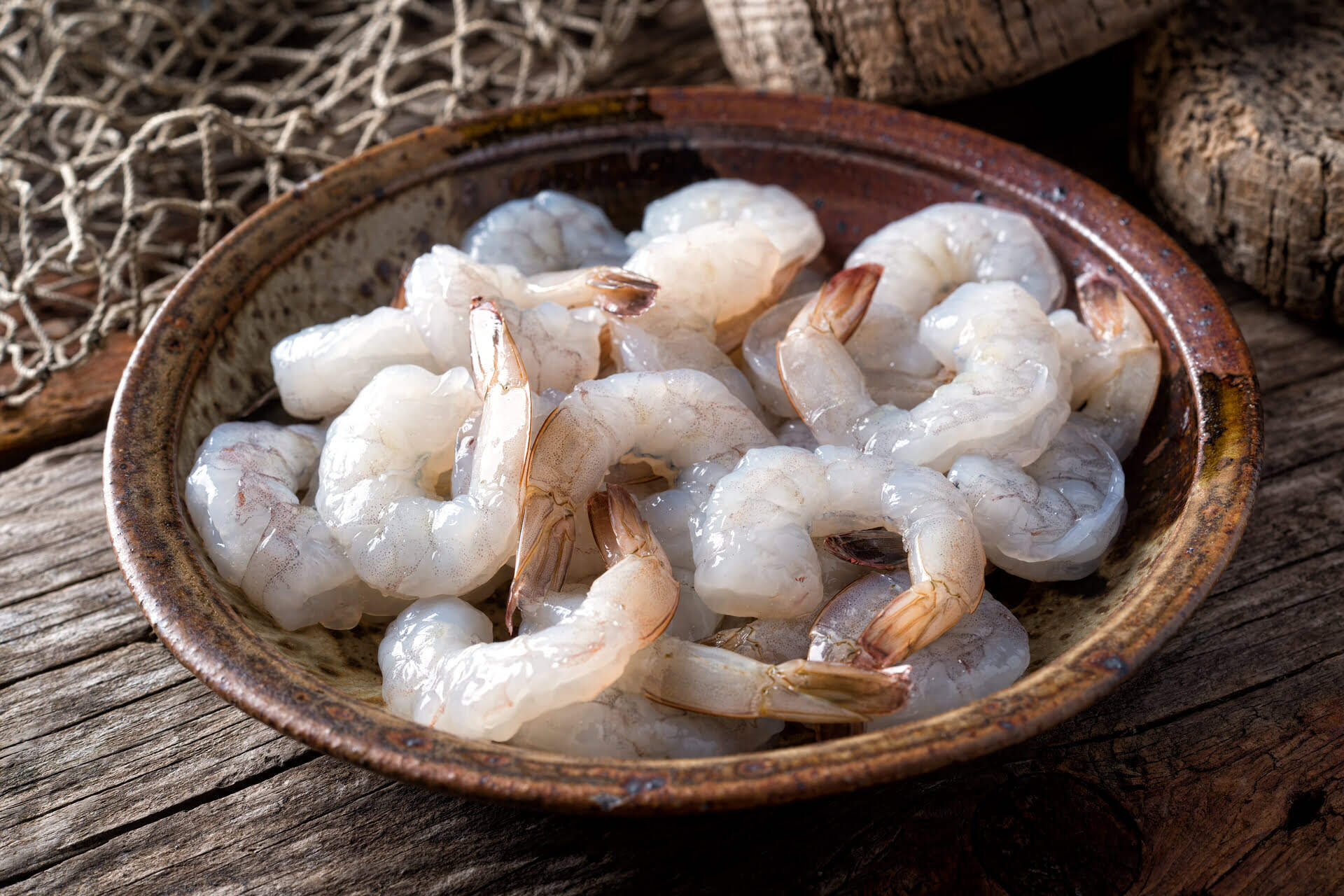
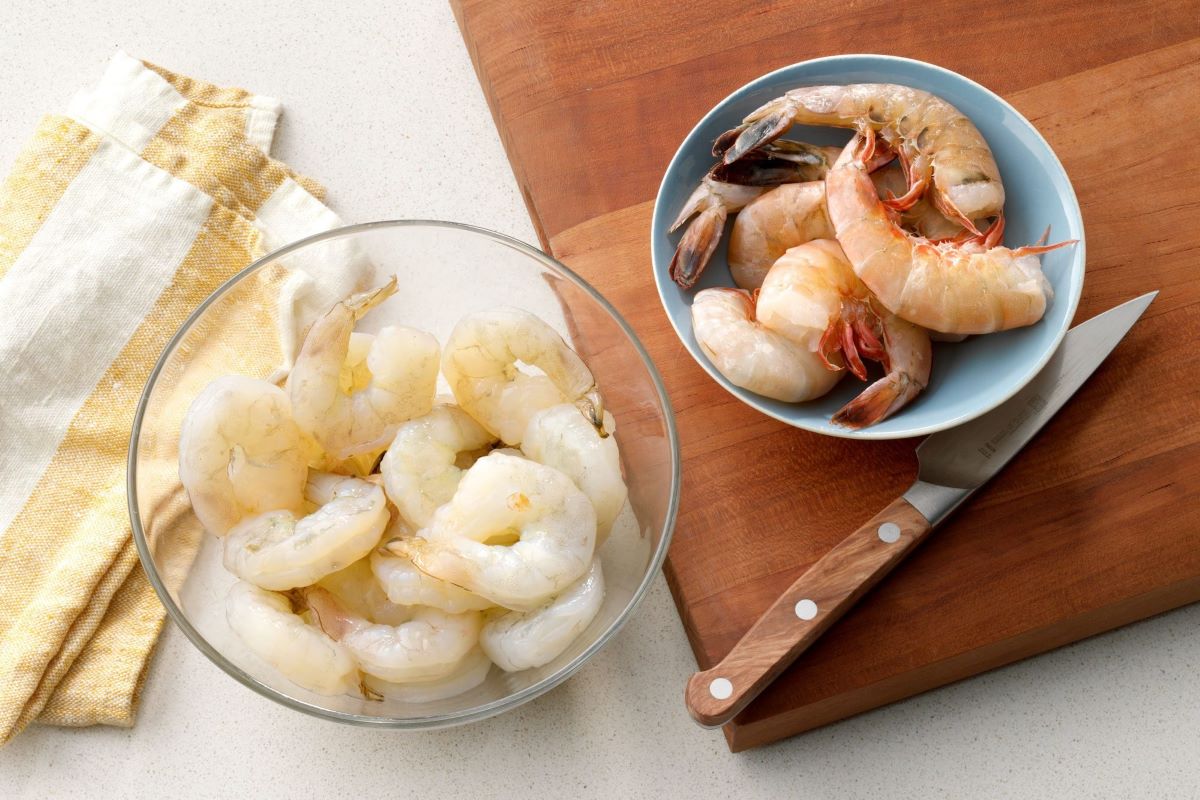
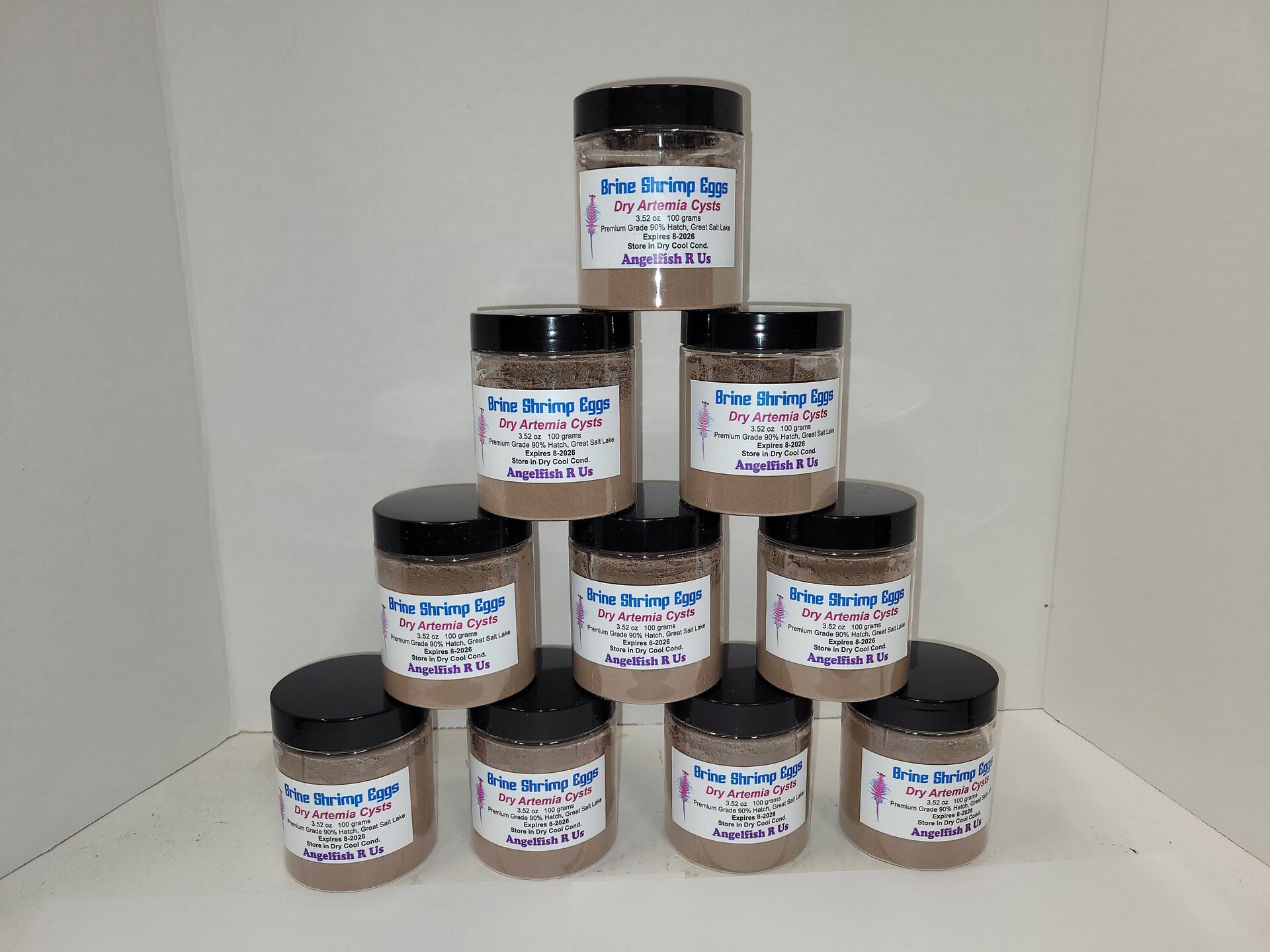
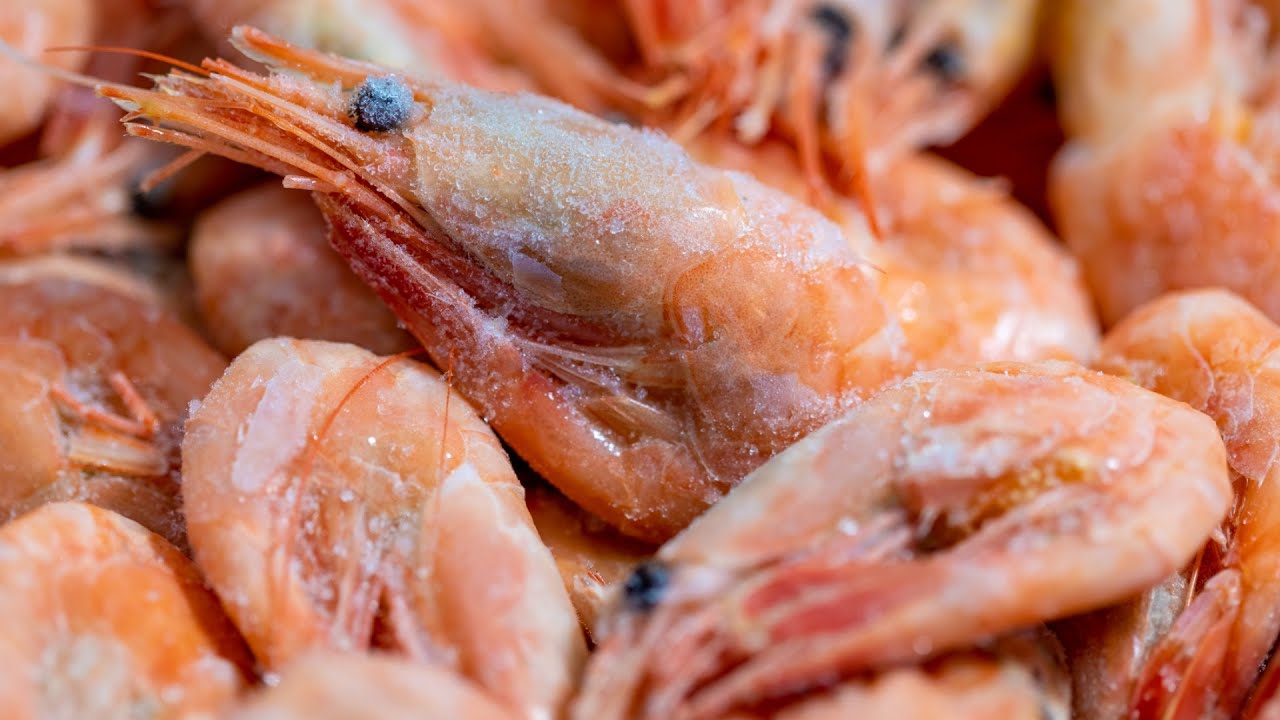
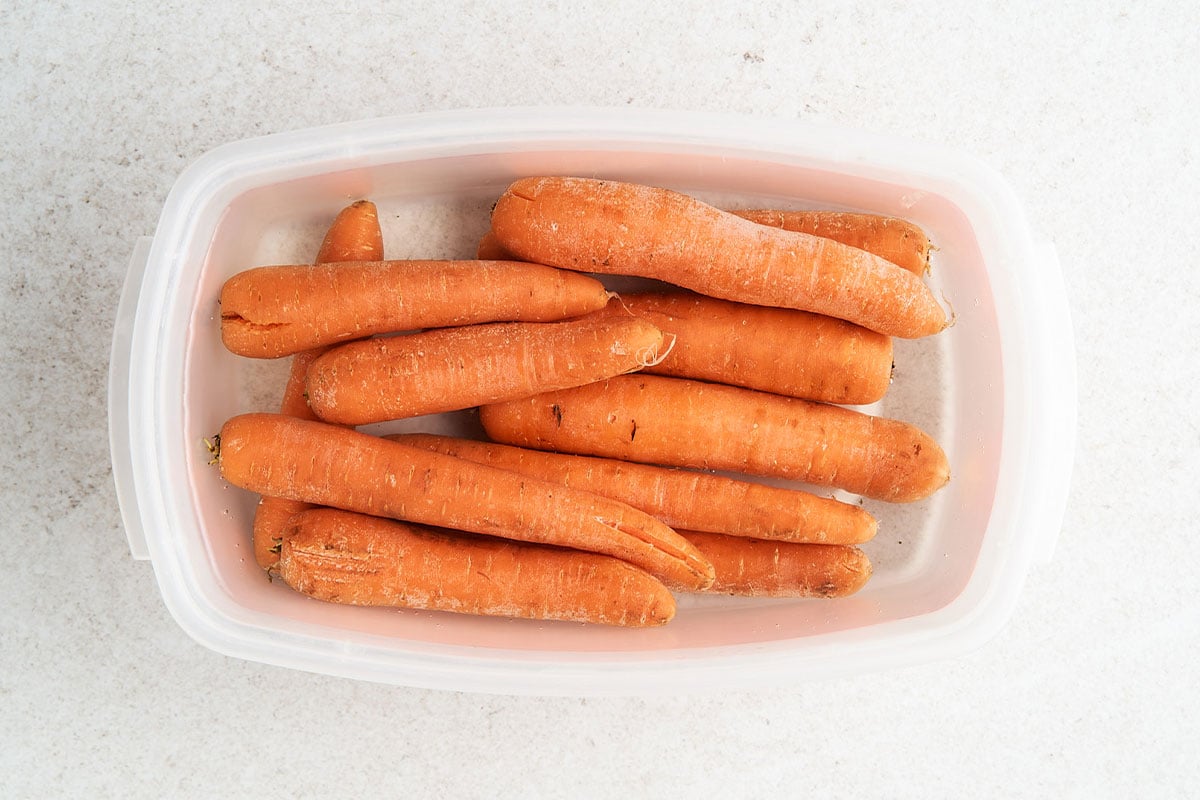


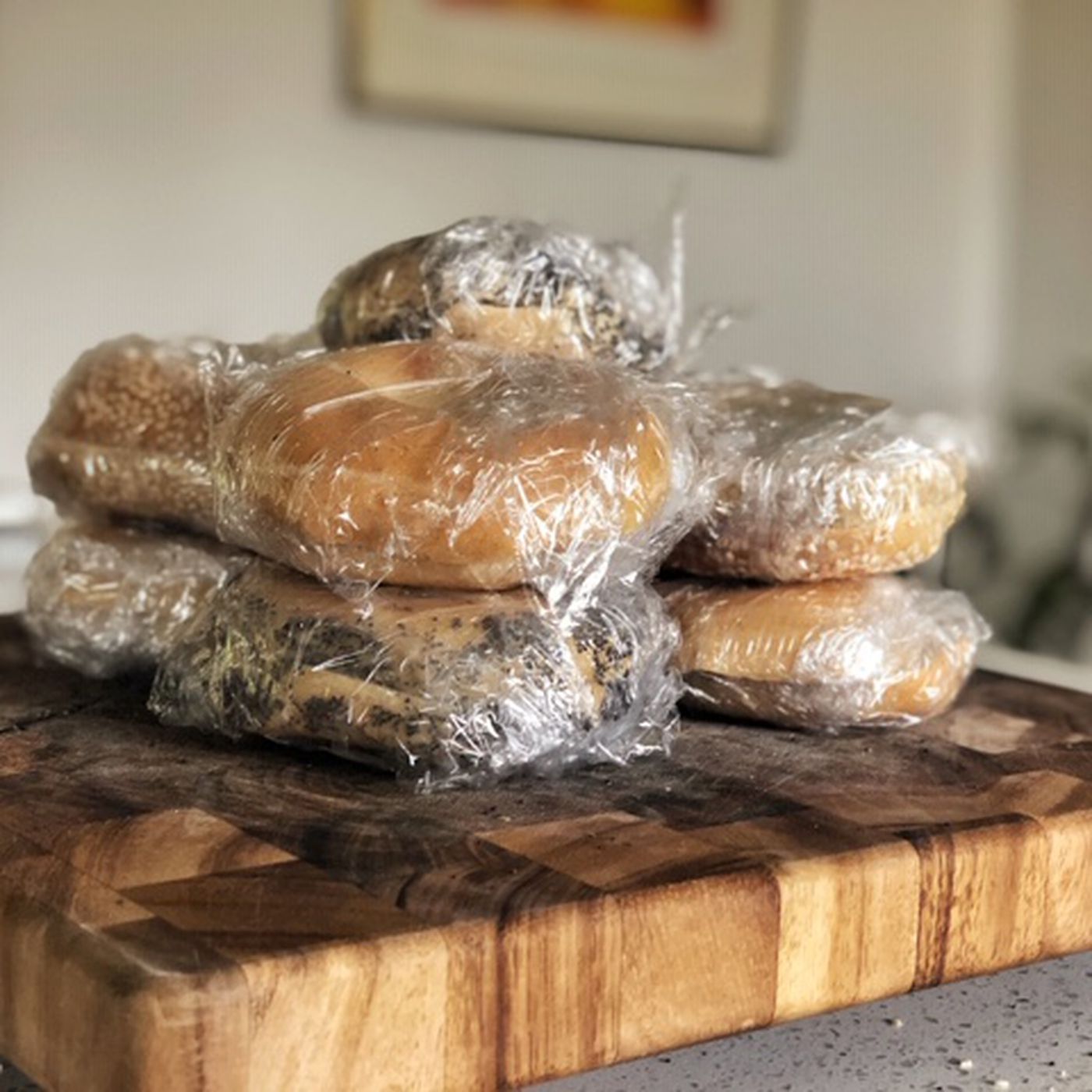
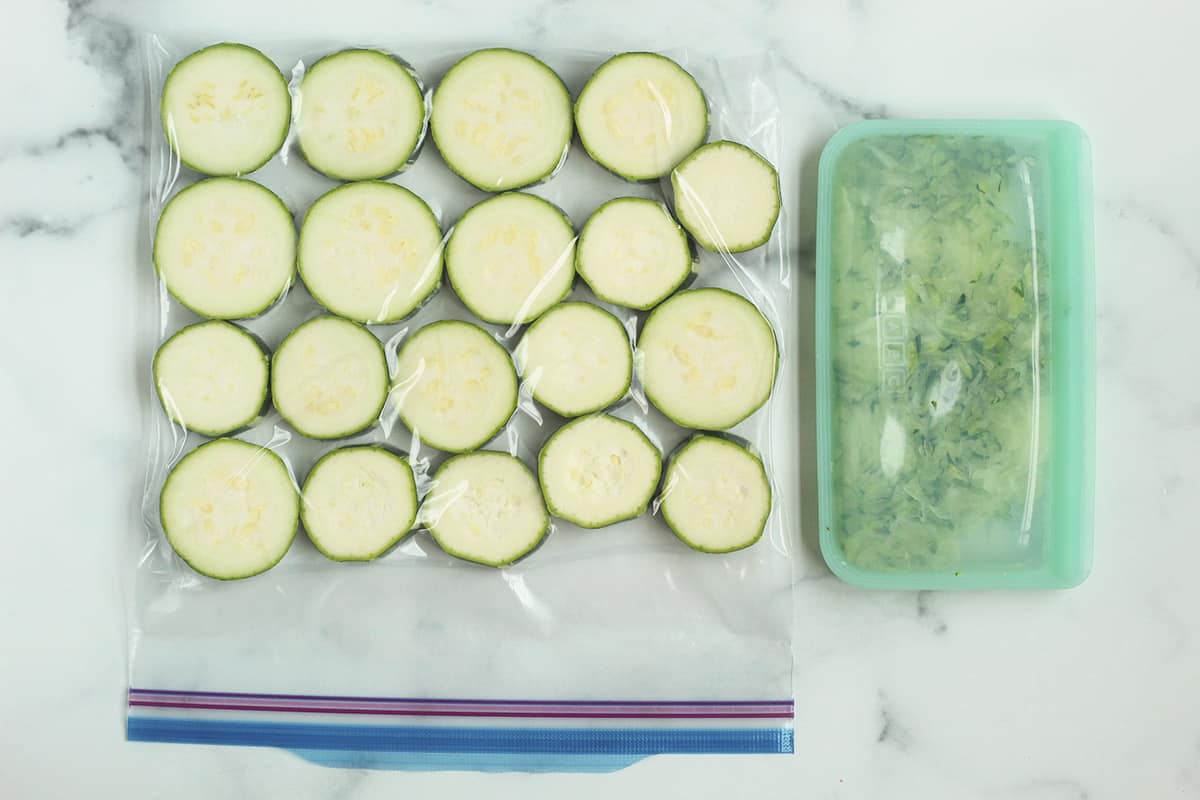
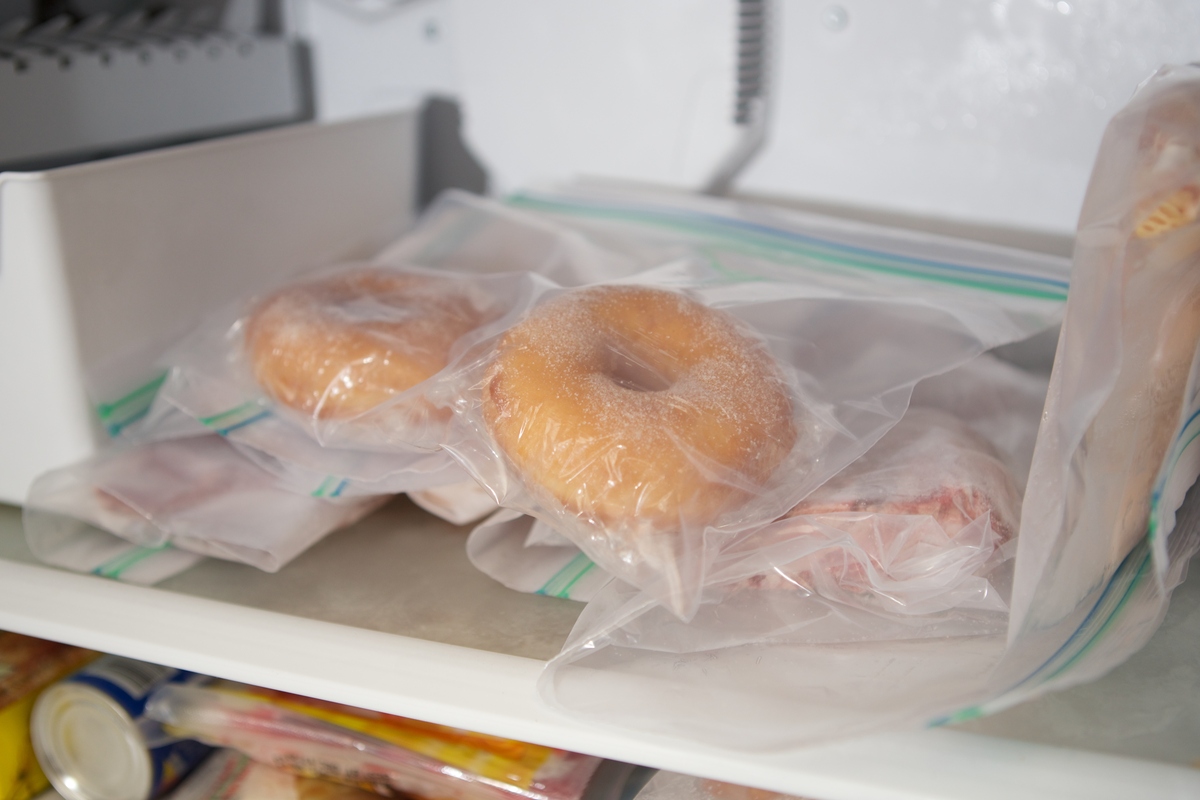
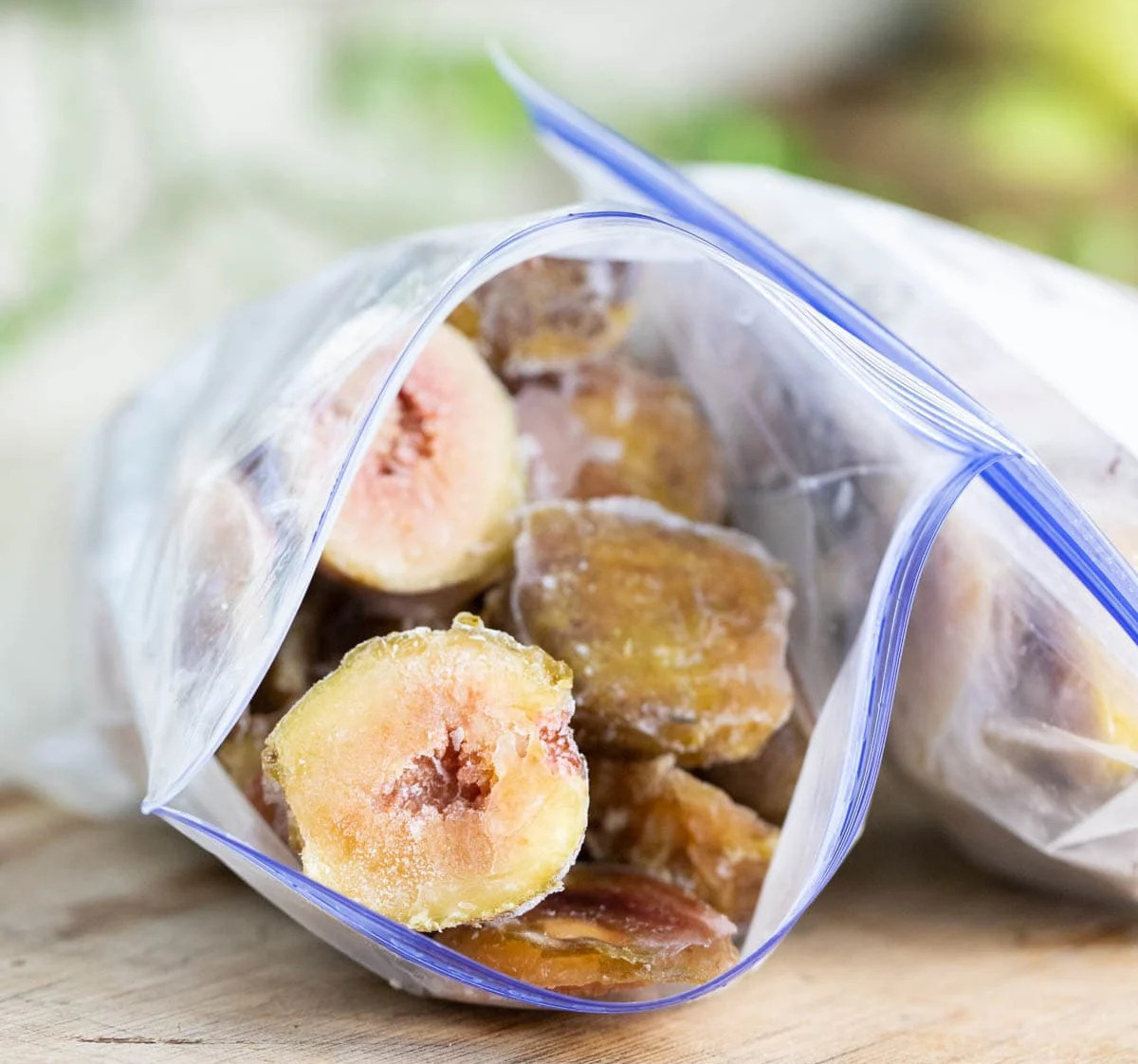
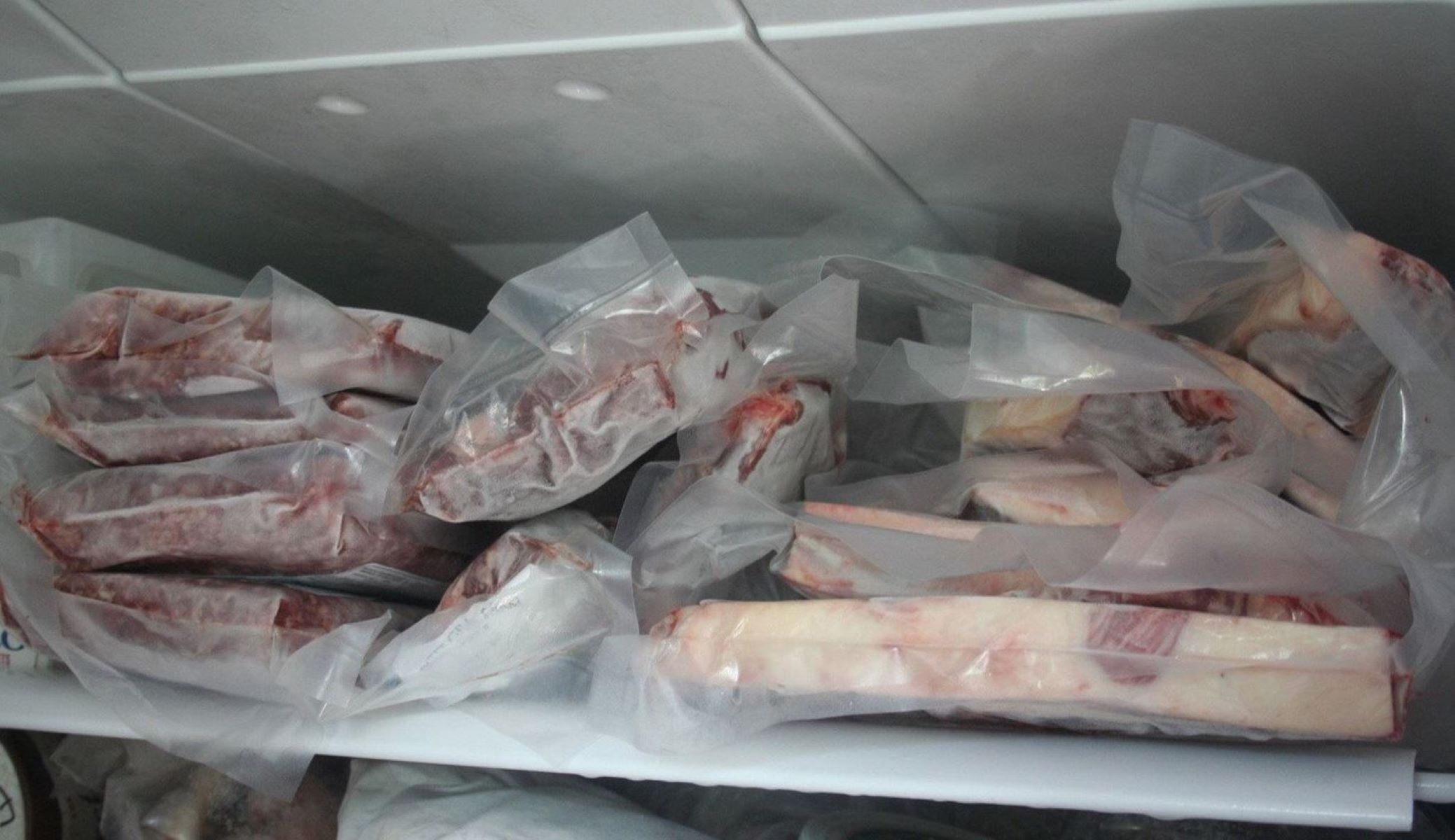
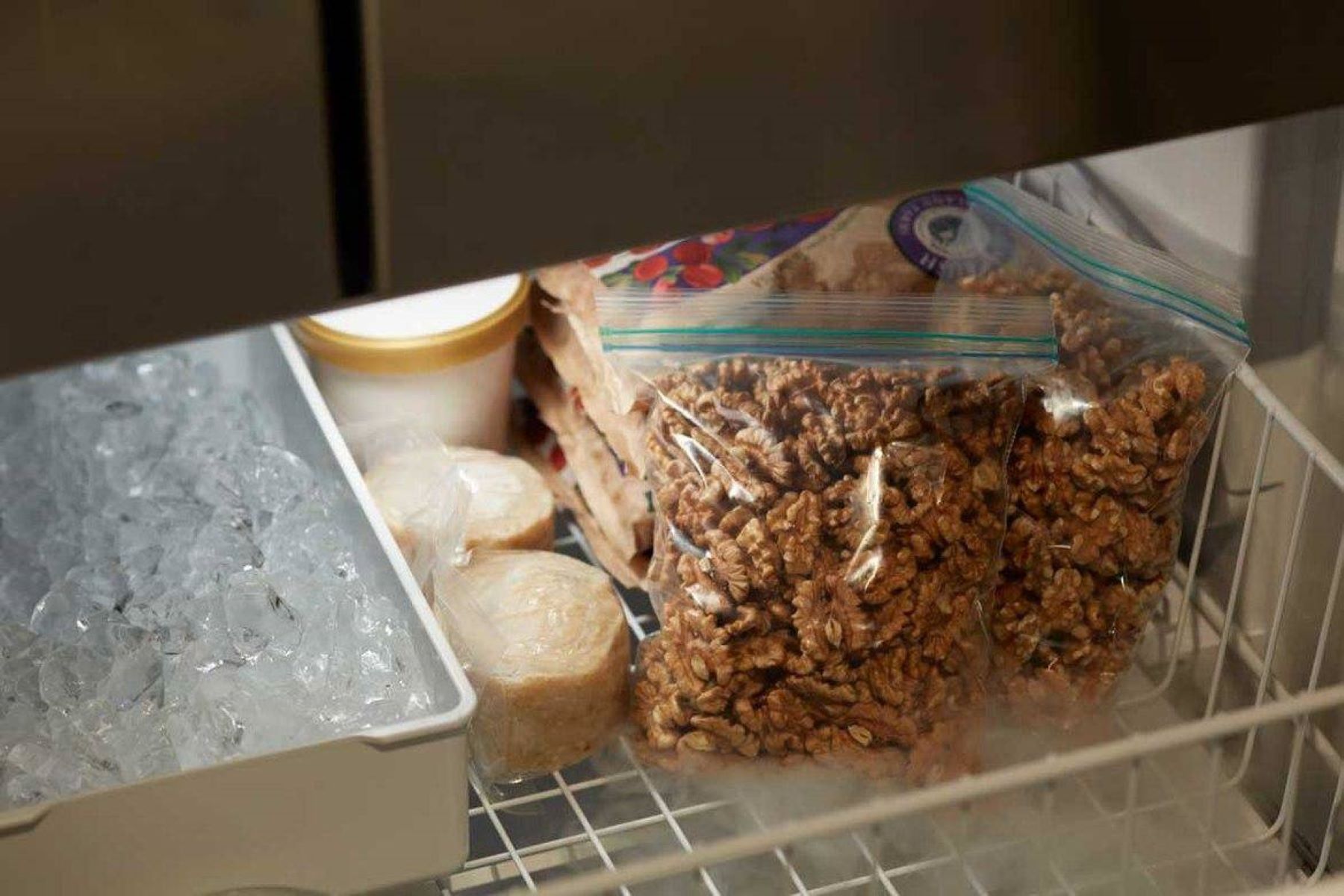

0 thoughts on “How To Store Shrimp In Freezer”